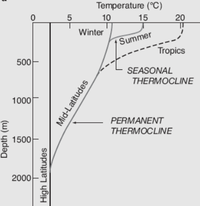
Photo from wikipedia
Abstract To meet the increasing power demand in cities under the spatial constraints for cable channels, the application of high temperature superconducting (HTS) cables cooled with liquid nitrogen offers an… Click to show full abstract
Abstract To meet the increasing power demand in cities under the spatial constraints for cable channels, the application of high temperature superconducting (HTS) cables cooled with liquid nitrogen offers an increasingly attractive alternative to conventional cable solutions. This paper presents a differential equation model for three-phase concentric HTS cables, describing the temperature distribution in the various cable layers and in the liquid nitrogen flow. The design of the 1 km long AmpaCity cable is used as a reference, which presently is the longest HTS cable installation in the world. The model considers the AC losses in the superconducting phases in addition to the external thermal load, as well as pressure losses in the coolant flow. The integrity of the algorithm is verified through energy conservation, yielding negligible numerical solver errors. The model is then applied to the operation of the AmpaCity cable. The monitoring of its operating range is explained, based on electrical and coolant properties measured at the cable end. The final application study shows options for extending the cable length up to factor five, using a second cooling unit in combination with a mixed coolant.
Journal Title: Cryogenics
Year Published: 2017
Link to full text (if available)
Share on Social Media: Sign Up to like & get
recommendations!